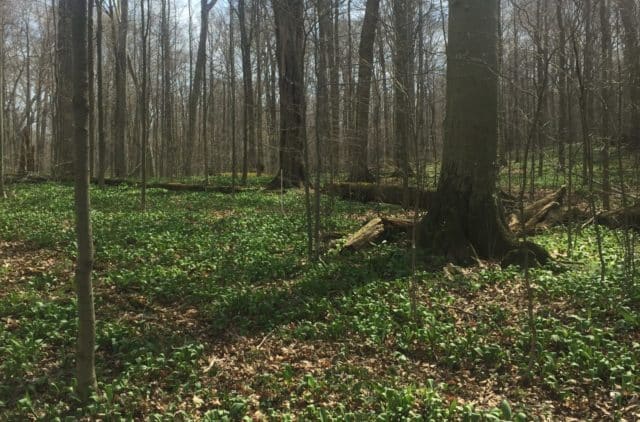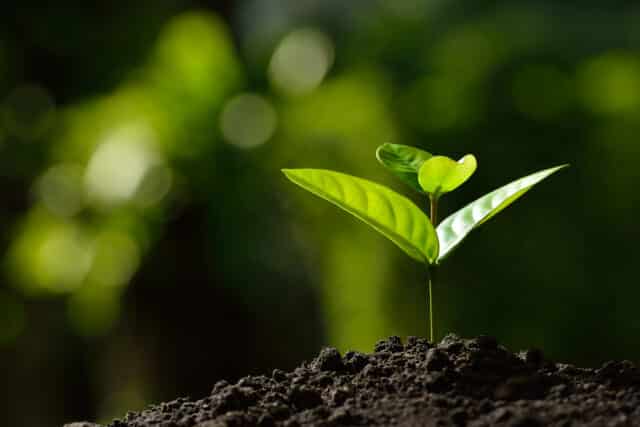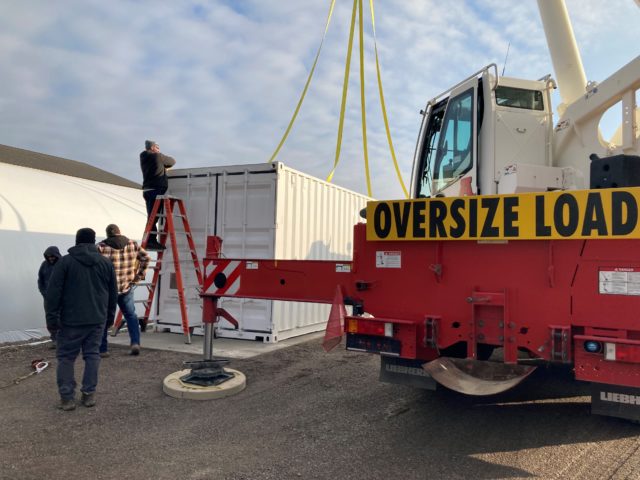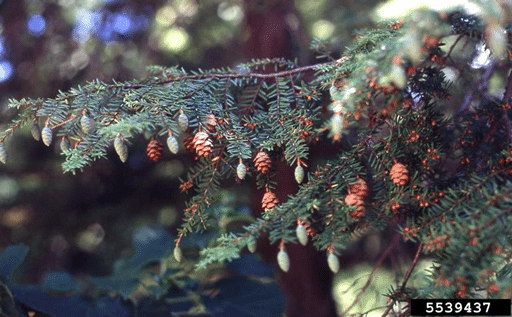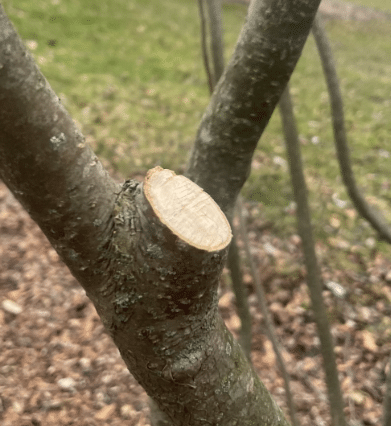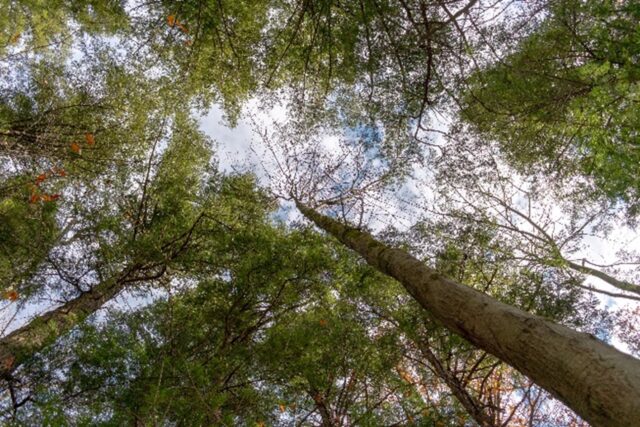Why and How We Collect and Store Tree Seeds at the Holden Arboretum
December 18, 2023

Holden Arboretum is home base for the Great Lakes Basin Forest Health Collaborative (GLB FHC).
As Holden’s Forest Health Coordinator, I collect a lot of tree seeds. Collected seed for any plant species is an important tool for aiding species survival – they allow humans to restore forested areas or conserve genetic diversity at seed banks.
In my case, the species are important to the Great Lakes Basin Forest Health Collaborative. This collaboration is between many different organizations, researchers, and other people across the Great Lakes region that are focused on activities related to pest and disease resistance breeding in ash, American beech, and eastern hemlock trees.
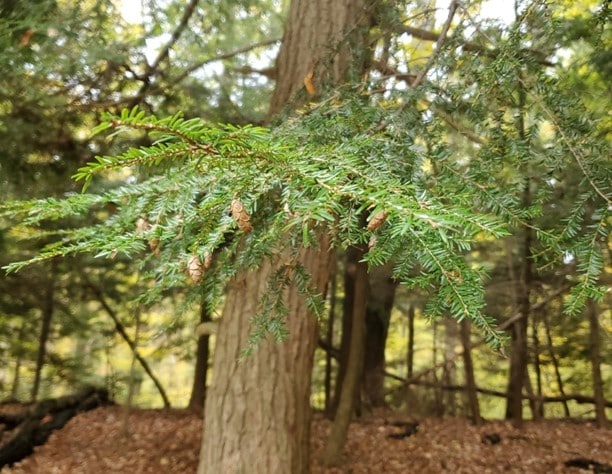
Some of the most noteworthy seeds I collected this year were from Holden’s lingering ash clone orchard. This orchard, planted at the Arboretum, contains trees grafted from (meaning they’re clones of) “lingering” ash. These lingering trees remained healthy in areas otherwise infested by the emerald ash borer, and therefore might be resistant to the pests. It’s exciting that our clones set seed this year, and the seeds we collected will be used for research investigating how well the resistance trait is passed on when allowing lingering trees to open pollinate.
The benefits of collecting seeds are also passed onto me. It’s good for my health, since I end up feeling good about my actions, and it’s a great outdoor activity that’s fulfilling the ancient instinct of gathering items from nature. One of my nicest moments outdoors collecting seeds is when a red-tailed hawk decided to investigate what I was doing.
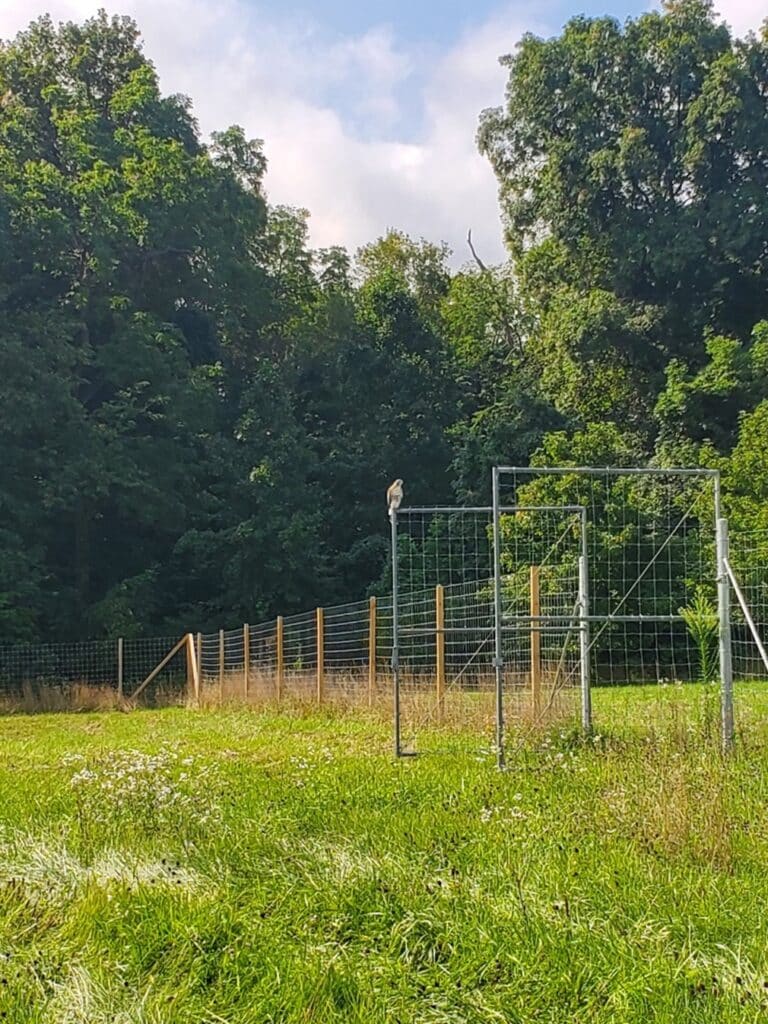
How we collect tree seeds
Collecting seeds from trees can be tricky. With ash trees, which are ripe in September, the seeds have wings and are inclined to fall easily from the branch, which means the wind can blow them away from you as you attempt to retrieve them. In our case, the ash orchard at the Long Center for Plant and Environmental Science is young and a few branches are still able to be reached by hand, which helps.
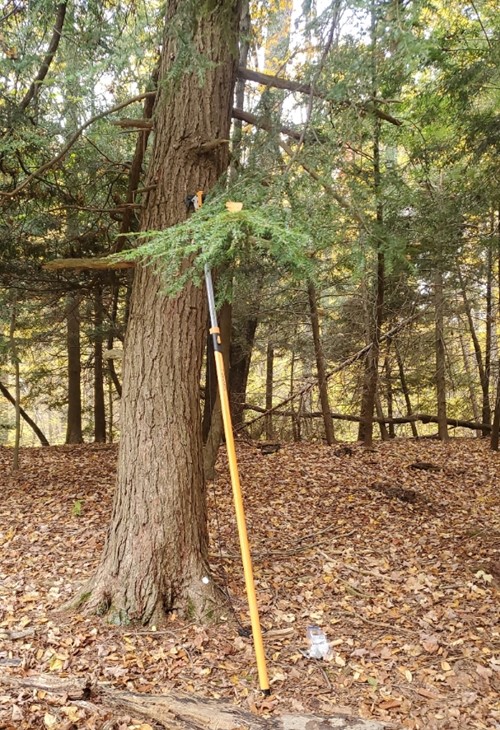
We also collect cones from eastern hemlock, which are ripe in October. Eastern hemlock trees are very attached to their cones and will open the cone scales on a warm day in autumn to release their winged seed. This means I need to pick the cones off the branches before this happens, but after the cones mature (change color from green to brown). In most cases that means a pole pruner is needed to prune small parts of the branches that have cones attached. Luckily each cone can have 10-12 seeds inside.
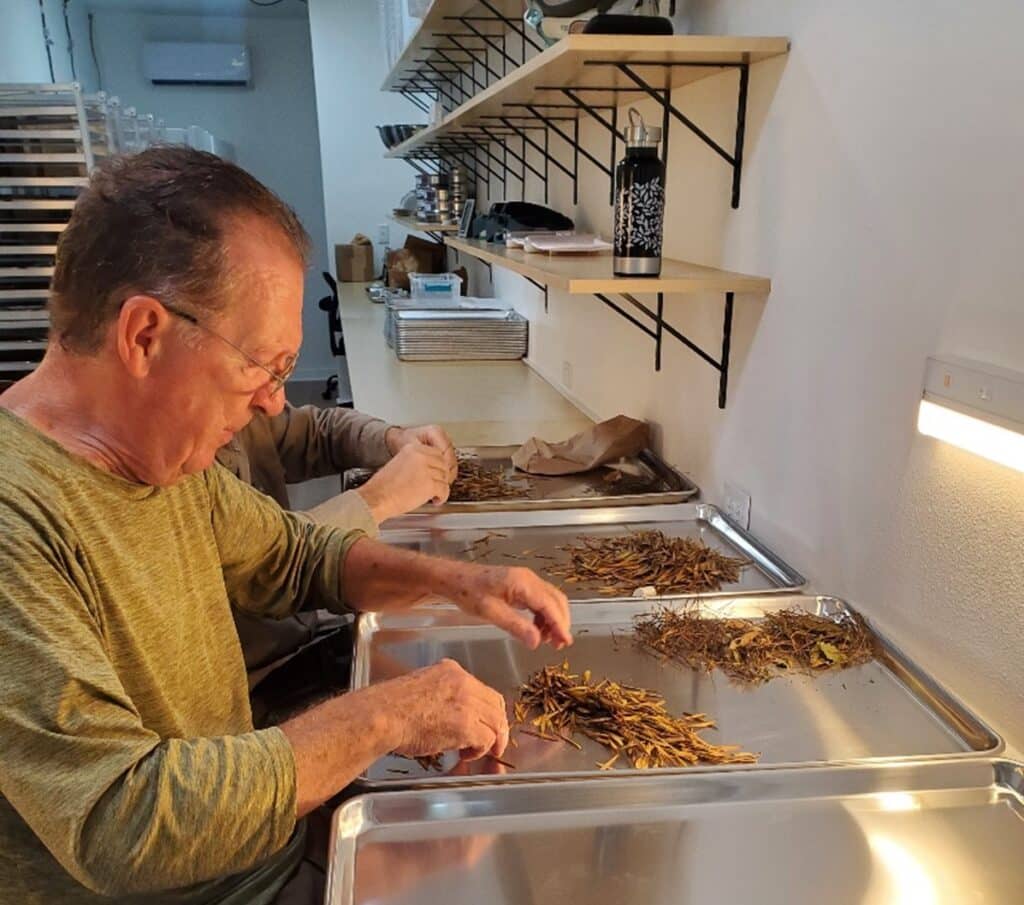
How we store seeds
Seeds we pick need to be processed before they can be stored. For ash, this requires removing debris and insects from the seeds (small spiders and shield bugs can sometimes hide within the bundle of ash seeds we pick from the tree) and letting them dry before storing them in the refrigerator.
Eastern hemlock seeds can be left to dry in a paper bag, and they will open their cone scales as they dry so that the seeds can be removed. This is most easily done by shaking the paper bag to loosen all the seeds from the cone. They also can be stored in the fridge for later germination. In our case we are keeping seeds to grow trees for future research experiments.
Read more: A Seed Station for Forest Restoration
If you’re interested in volunteering to help collect or process tree seeds, please contact Rachel Kappler at [email protected] or Kimberly Lessman, the Seed Bank Manager, at [email protected].
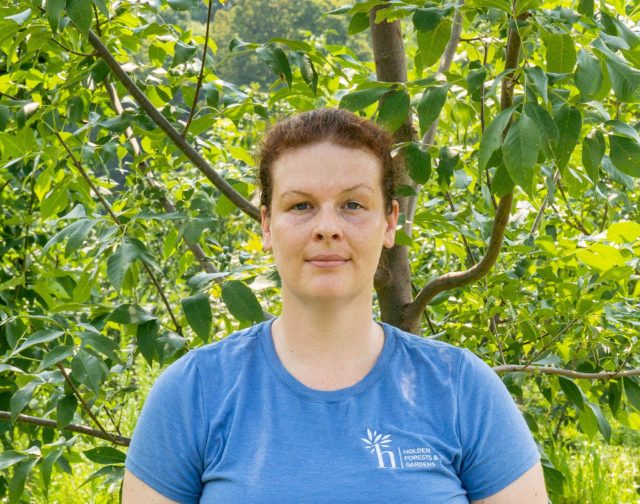
Rachel Kappler
Great Lakes Basin Forest Health Collaborative (GLB FHC) Coordinator
Rachel Kappler is the coordinator for partners of the Great Lakes Basin Forest Health Collaborative. She helps facilitate partners tree activities for pest-resistance breeding in current priority species, ash, American beech, and eastern hemlock. She also hosts workshops, webinars, and training for partners to help them achieve their forest health goals.
